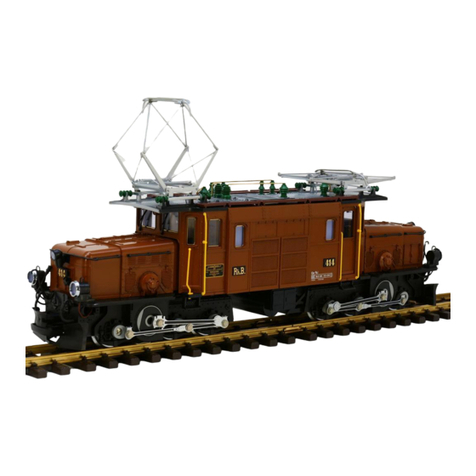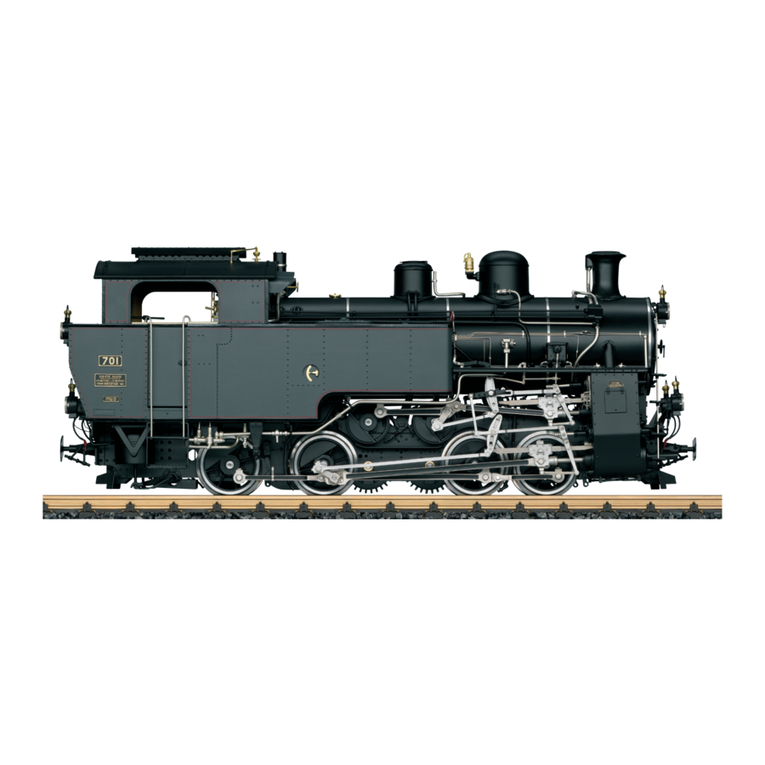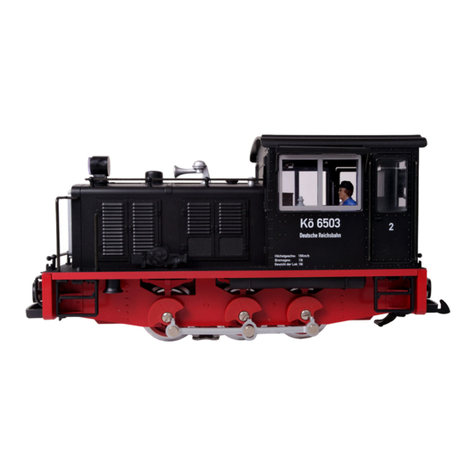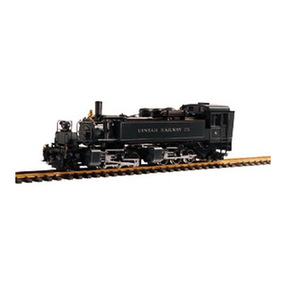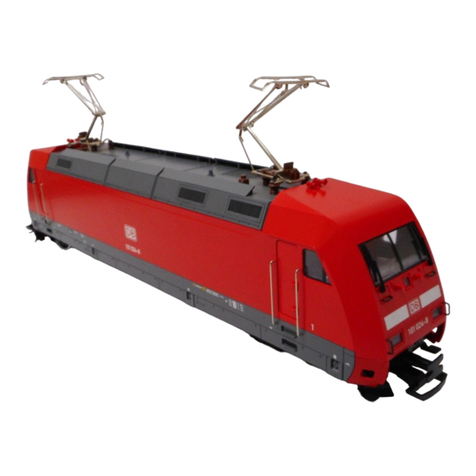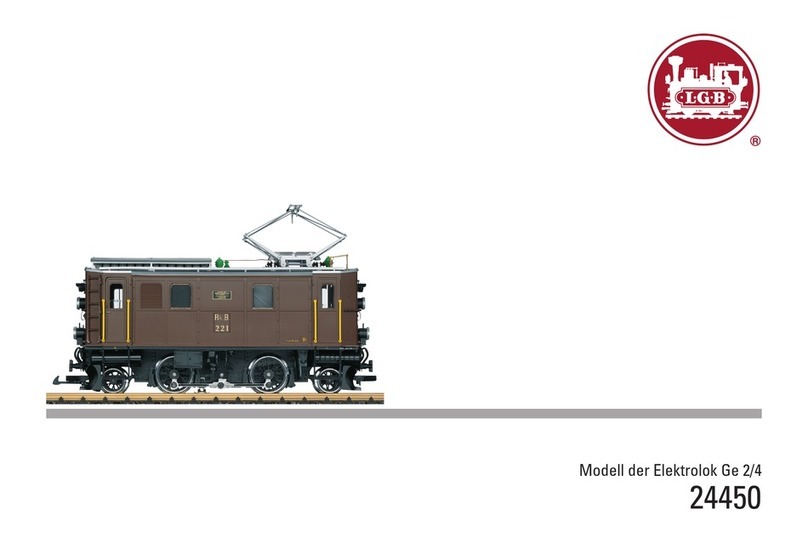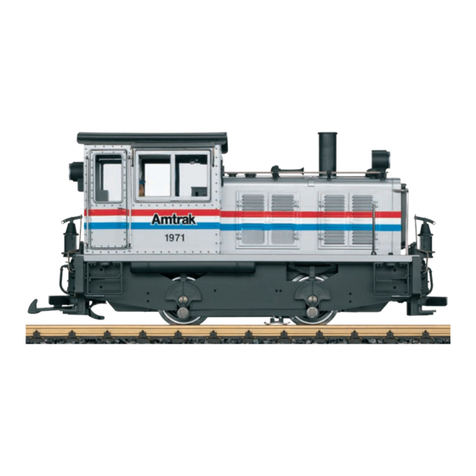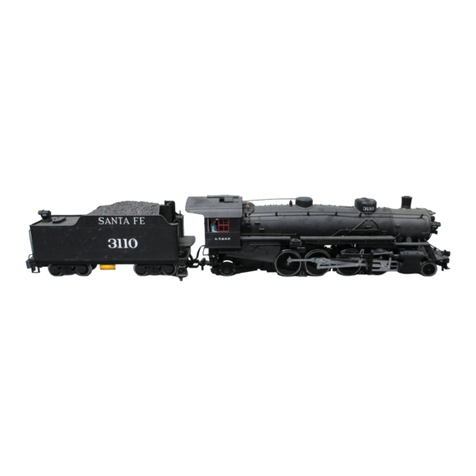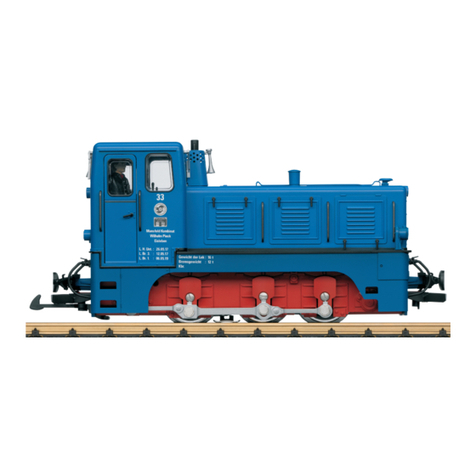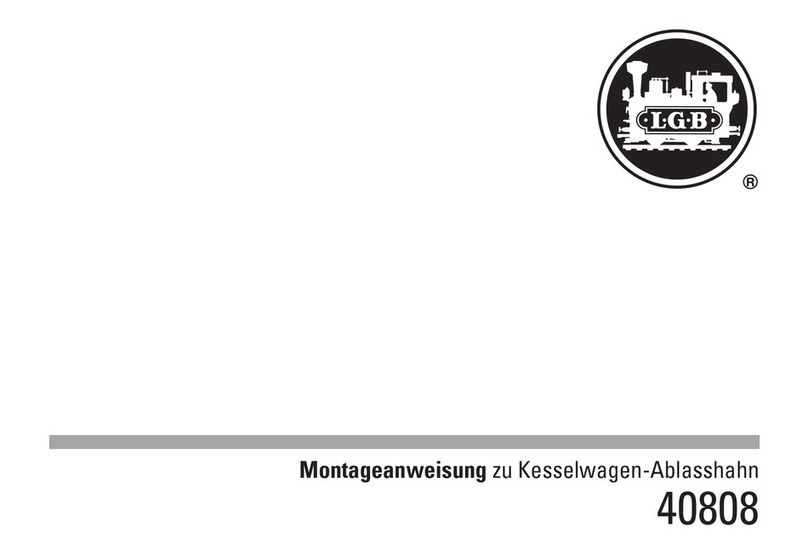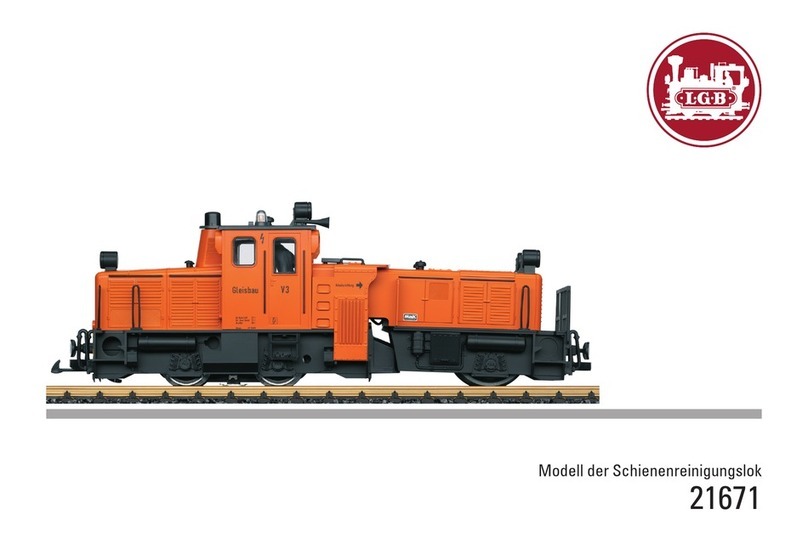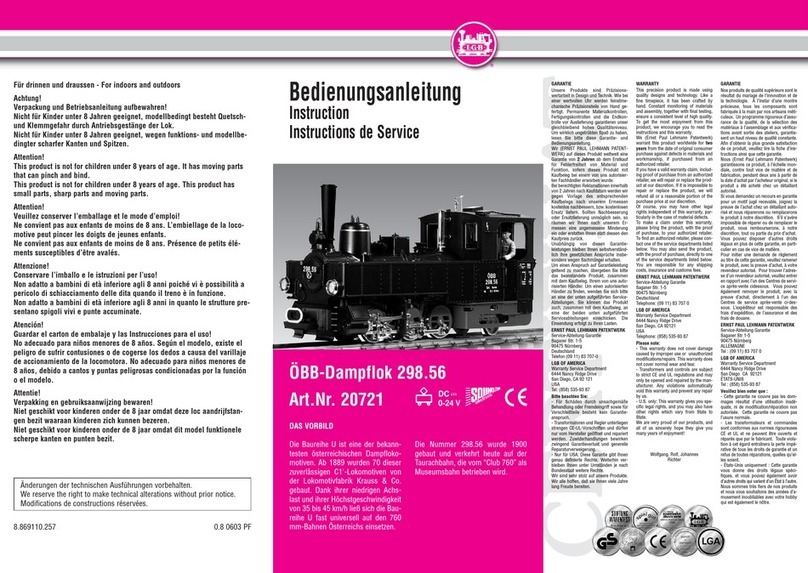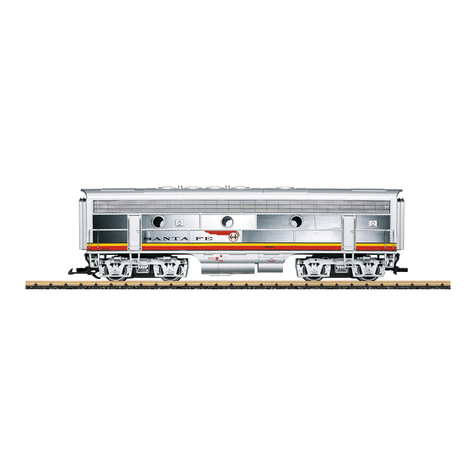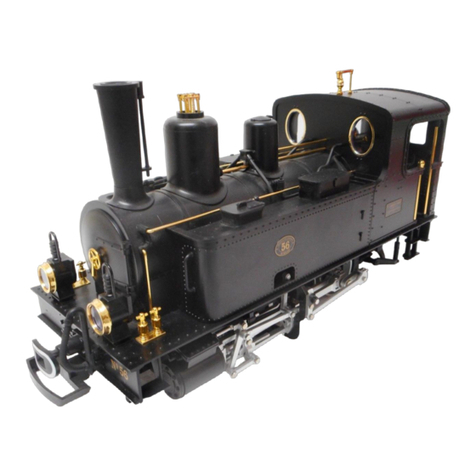
5
Multiprotokollbetrieb
Analogbetrieb
Der Decoder kann auch auf analogen Anlagen oder Gleisabschnitten betrieben wer-
den. Der Decoder erkennt die analoge Gleichspannung (DC) automatisch und passt
sich der analogen Gleisspannung an. Es sind alle Funktionen, die unter mfx oder DCC
für den Analogbetrieb eingestellt wurden aktiv (siehe Digitalbetrieb).
Die Eingebauten Sound-Funktionen sind ab Werk im Analogbetrieb nicht aktiv.
Digitalbetrieb
Der Decoder ist ein Multiprotokolldecoder. Der Decoder kann unter folgenden Digital-
Protokollen eingesetzt werden: mfx oder DCC.
Das Digital-Protokoll mit den meisten Möglichkeiten ist das höchstwertige Digital-
Protokoll. Die Reihenfolge der Digital-Protokolle ist in der Wertung fallend:
Priorität 1: mfx; Priorität 2: DCC; Priorität 3: DC
Hinweis: Digital-Protokolle können sich gegenseitig beeinflussen. Für einen stö-
rungsfreien Betrieb empfehlen wir, nicht benötigte Digital-Protokolle mit Configura-
tions Variable (CV) 50 zu deaktivieren.
Deaktivieren Sie, sofern dies Ihre Zentrale unterstützt, auch dort die nicht benötigten
Digital-Protokolle.
Werden zwei oder mehrere Digital-Protokolle am Gleis erkannt, übernimmt der De-
coder automatisch das höchstwertige Digital-Protokoll, z.B. mfx/DCC, somit wird das
mfx-Digital-Protokoll vom Decoder übernommen.
Hinweis: Beachten Sie, dass nicht alle Funktionen in allen Digital-Protokollen möglich
sind. Unter mfx und DCC können einige Einstellungen von Funktionen, welche im
Analog-Betrieb wirksam sein sollen, vorgenommen werden.
Hinweise zum Digitalbetrieb
• Die genaue Vorgehensweise zum Einstellen der diversen CVs entnehmen Sie bitte
der Bedienungsanleitung Ihrer Mehrzug-Zentrale.
• Die ab Werk eingestellten Werte sind für mfx gewählt, so dass ein bestmöglichstes
Fahrverhalten gewährleistet ist.
Für andere Betriebssysteme müssen gegebenenfalls Anpassungen getätigt
werden.
mfx-Protokoll
Adressierung
• Keine Adresse erforderlich, jeder Decoder erhält eine einmalige und eindeutige
Kennung (UID).
• Der Decoder meldet sich an einer Central Station oder Mobile Station mit seiner
UID-Kennung automatisch an.
Programmierung
• Die Eigenschaften können über die grafische Oberfläche der Central Station bzw.
teilweise auch mit der Mobile Station programmiert werden.
• Es können alle CV mehrfach gelesen und programmiert werden.
• Die Programmierung kann entweder auf dem Haupt- oder dem Programmiergleis
erfolgen.
• Die Defaulteinstellungen (Werkseinstellungen) können wieder hergestellt werden.
• Funktionsmapping: Funktionen können mit Hilfe der Central Station 60212 (einge-
schränkt) und mit der Central Station 60213/60214/60215 beliebigen Funktionstasten
zugeordnet werden (Siehe Hilfe in der Central Station).
DCC-Protokoll
Adressierung
• Kurze Adresse – Lange Adresse – Traktionsadresse
• Adressbereich:
1 – 127 kurze Adresse, Traktionsadresse
1 – 10.239 lange Adresse
• Jede Adresse ist manuell programmierbar.
• Kurze oder lange Adresse wird über die CV 29 ausgewählt.
• Eine angewandte Traktionsadresse deaktiviert die Standard-Adresse.
Programmierung
• Die Eigenschaften können über die Configuration Variablen (CV) mehrfach geän-
dert werden.
• Die CV-Nummer und die CV-Werte werden direkt eingegeben.
• Die CVs können mehrfach gelesen und programmiert werden (Programmierung
auf dem Programmiergleis).
• Die CVs können beliebig programmiert werden (PoM - Programmierung auf dem
Hauptgleis). PoM ist nicht möglich bei den CV 1, 17, 18 und 29. PoM muss von Ihrer
Zentrale unterstützt werden (siehe Bedienungsanleitung ihres Gerätes).
• Die Defaulteinstellungen (Werkseinstellungen) können wieder hergestellt werden.
• 14 bzw. 28/128 Fahrstufen einstellbar.
• Alle Funktionen können entsprechend dem Funktionsmapping geschaltet werden.
• Weitere Information, siehe CV-Tabelle DCC-Protokoll.
Es wird empfohlen, die Programmierungen grundsätzlich auf dem Programmiergleis
vorzunehmen.






